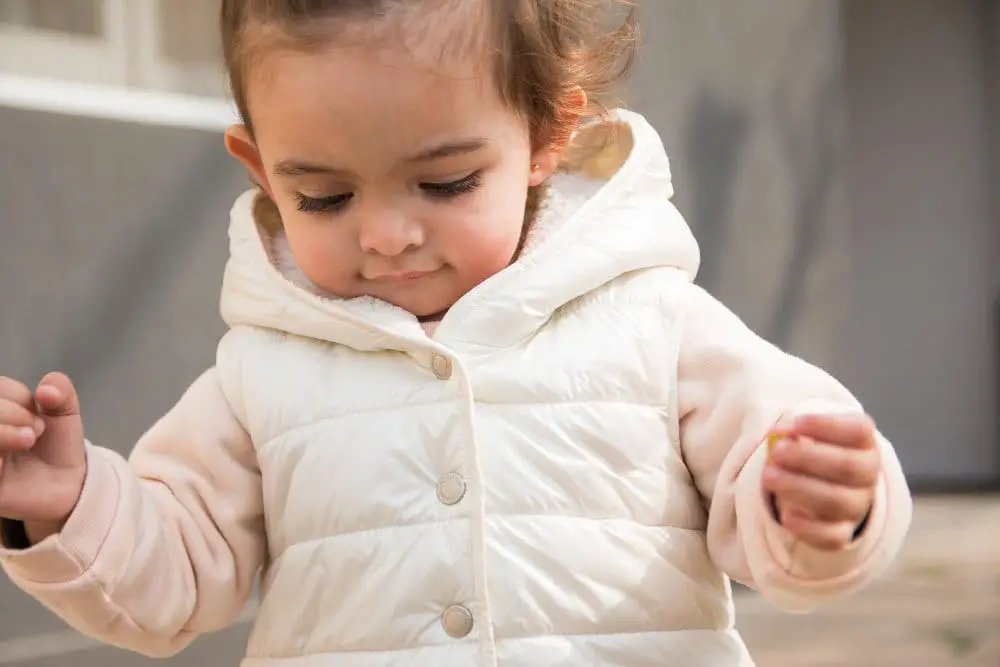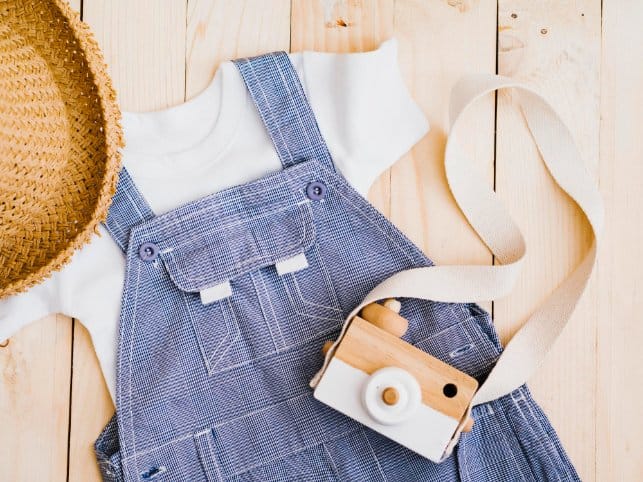The Complete Expert Guide to Stylish, Safe & Sustainable Kids Fashion
🔑 Key Takeaways
- Top performers: Pehr, Tiny Cottons, and Rylee + Cru offer the best combination of durability, comfort, and style for 2025
- Budget-friendly winners: Carter’s, Cat and Jack (Target), and Gap provide excellent value without sacrificing quality
- Sustainability leaders: Organic cotton brands like Colored Organics and Burt’s Bees Baby prioritize eco-friendly materials
- 2025 trends: Gender-neutral designs, oversized comfort wear, and soft pastels dominate this year’s collections
- Smart shopping: Mix everyday basics with special pieces, and always check sizing charts as brands vary significantly
📚 Table of Contents
Understanding What Toddlers Really Need
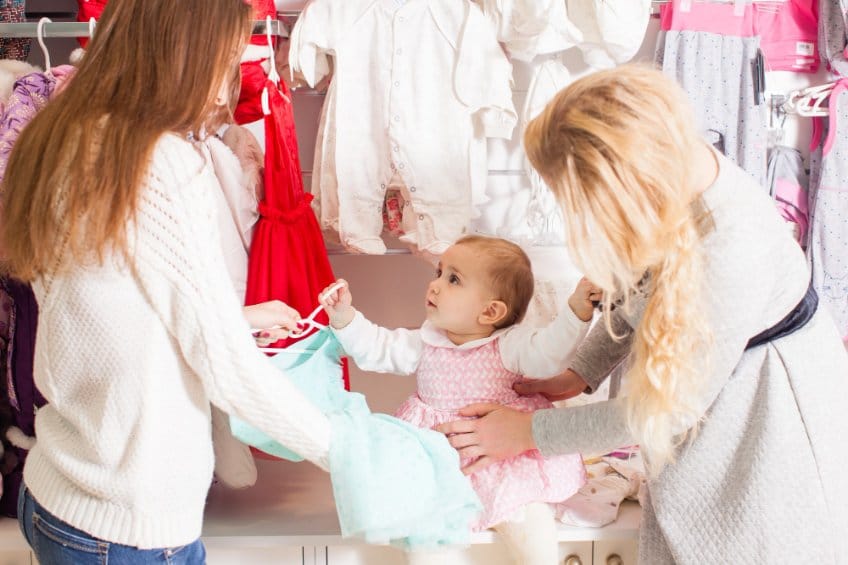
Shopping for toddler clothes requires balancing comfort, safety, and durability with style and budget considerations. Unlike baby clothing, toddlers need garments that support their active exploration while being practical for busy parents.
5 Essential Things to Look for in Toddler Clothing
Comfort & Mobility
Soft fabrics, stretchy materials, and room to move freely
Easy Dressing
Wide necklines, elastic waists, and simple closures
Durability
Quality stitching, reinforced areas, and stain resistance
Safety Features
No small parts, appropriate fit, flame-resistant sleepwear
Growth Adaptability
Adjustable features and designs that work longer
Size and Comfort Priorities
Toddlers need clothes that allow freedom of movement as they explore their world. Experts recommend choosing items one size larger to accommodate growth spurts, but not so large that they pose tripping hazards. Understanding toddler sizing helps parents make smarter purchases.
Look for soft seams and tagless designs to prevent skin irritation. Necklines should be wide enough to easily fit over their heads without struggle. Many brands like Carter’s and Cat and Jack design specifically with toddler comfort in mind.
Materials and Safety Standards
Natural fabrics like cotton are ideal for toddler clothing. They’re breathable, gentle on sensitive skin, and hold up well to frequent washing. When selecting safe fabrics for children, parents should prioritize materials free from harmful chemicals.
🚫 Safety Red Flags to Avoid
- Small decorative pieces that could detach
- Drawstrings around the neck area
- Excessively long ties or ribbons
- Scratchy materials or rough embellishments
- Non-flame-resistant sleepwear (unless tight-fitting cotton)
2025 Toddler Fashion Trends
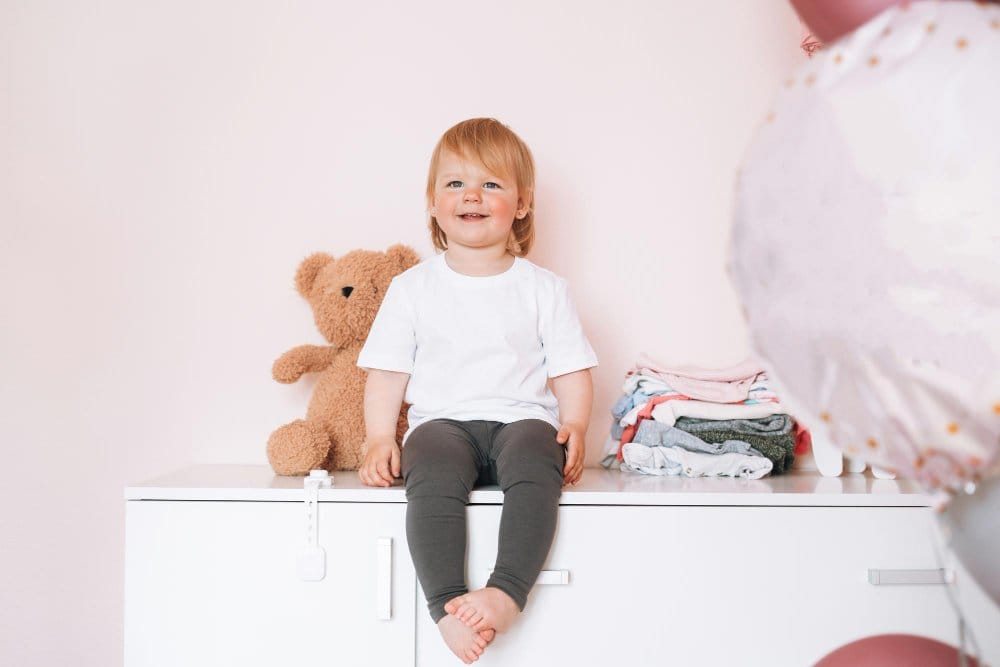
This year brings exciting shifts in children’s fashion, with sustainability, comfort, and individual expression taking center stage. The toddler clothing market is expected to grow significantly, driven by parents seeking higher quality, more ethical options.
🌱 Sustainability First
Eco-conscious parents are driving demand for organic cotton, recycled materials, and ethical production. Brands like Colored Organics and Burt’s Bees Baby are leading this movement with GOTS-certified materials and transparent supply chains.
🎨 Gender-Neutral Fashion
The move away from traditional pink and blue is stronger than ever. Parents prefer versatile pieces in earthy tones, soft pastels, and bold colors that work for any child, making hand-me-downs easier and reducing waste.
☁️ Oversized Comfort
Inspired by athleisure trends, oversized hoodies, loose t-shirts, and relaxed-fit pants dominate 2025 collections. This style prioritizes comfort while allowing children to wear pieces longer as they grow.
🌸 Soft Color Palettes
Soft pinks, lavender, dusty blue, and sage green create calming, modern looks. These gentle tones pair beautifully with brighter accent pieces and work across seasons.
🔄 Matching Sets & Coordination
Coordinated tops and bottoms simplify morning routines for busy parents. From joggers with hoodies to shorts with matching tees, these sets offer effortless style.
Best Toddler Clothing Brands in 2025
What are the best toddler clothing brands?
Based on expert testing and parent feedback, the top toddler clothing brands consistently deliver on quality, comfort, and durability. Our comprehensive analysis evaluated over 50 brands across different price points and categories. Take our toddler clothing brand quiz to discover which brands are perfect for your child’s specific needs and your family’s priorities.
| Brand | Price Range | Quality Rating | Durability | Best For | Sustainability |
|---|---|---|---|---|---|
| Pehr | $$ | Excellent | Organic basics | High | |
| Carter’s | $ | Very Good | Everyday wear | Medium | |
| Rylee + Cru | $$$ | Excellent | Artistic designs | High | |
| Cat & Jack (Target) | $ | Good | Trendy basics | Medium | |
| Tiny Cottons | $$ | Excellent | Bold graphics | High | |
| Janie & Jack | $$$ | Excellent | Special occasions | Medium |
Budget-Friendly Champions
For parents seeking quality without breaking the bank, several brands consistently deliver excellent value. Quality children’s clothing doesn’t have to be expensive when you know where to look.
Carter’s remains the gold standard for affordable toddler clothing. Their sizes run from 2T-5T with durable fabrics that withstand multiple washes. Parents appreciate the consistent sizing and wide availability both online and in stores.
Cat and Jack from Target offers trendy styles at budget-friendly prices with most items under $20. Their one-year guarantee policy provides additional peace of mind for parents concerned about durability.
Premium & Boutique Options
For special occasions or investment pieces, luxury brands offer superior craftsmanship and unique designs that justify their higher price points.
Janie & Jack stands out with sophisticated designs and premium materials. Their detailed embroidery and classic styles command higher prices but offer timeless appeal that works for family photos and special events.
Rylee + Cru merges art with children’s fashion through unique illustrated prints and relaxed silhouettes. Their artist-designed patterns create one-of-a-kind pieces that spark conversations.
Sustainable & Ethical Leaders
Eco-conscious parents increasingly prioritize brands that demonstrate environmental responsibility and ethical manufacturing practices.
Colored Organics offers affordable, classic apparel in earthy and neutral colors, made from 100% organic cotton with water-based dyes. Every purchase helps a child in need, adding social impact to environmental benefits.
Pact provides GOTS-certified organic cotton basics at mid-range prices. Their production methods use up to 95% less water than conventional cotton, making them a smart choice for environmentally conscious families.
Regional Brand Favorites
Which clothing brand is best in the US?
American parents consistently favor brands that combine practicality with style. Carter’s dominates the mass market, while brands like Primary and Hanna Andersson offer premium domestic options.
Which clothing brand is best in the UK?
UK parents gravitate toward brands like M&S (Marks & Spencer), John Lewis, and Arket for their combination of quality, value, and British sensibilities. These high-street favorites offer durable, everyday options that stand the test of time.
International Favorites by Region
US: Carter’s, Gap Kids, Old Navy, Primary
UK: M&S, John Lewis, Next, Arket
Europe: H&M Kids, Zara Kids, Jacadi, Petit Bateau
Scandinavia: Mini Rodini, LIEWOOD, MarMar Copenhagen
What is the kids version of ASOS?
While ASOS doesn’t have a dedicated children’s line, the closest equivalent would be brands like Zara Kids or H&M Kids, which offer trend-focused, fast-fashion options for children. For parents seeking the ASOS aesthetic in children’s wear, Maisonette provides curated, fashion-forward options.
What is the kids version of Lululemon?
Alo Yoga Kids and Athleta Girl offer premium athletic wear for children similar to Lululemon’s adult offerings. These brands focus on high-quality activewear with technical fabrics and stylish designs perfect for active kids.
Benefits of Organic Cotton in Toddler Clothes
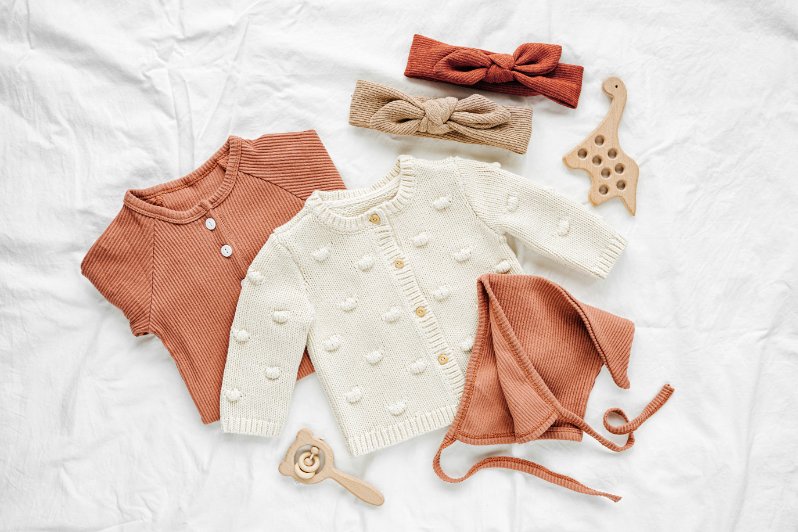
Organic cotton offers significant advantages for toddler clothing that address both health and environmental concerns. Parents increasingly choose organic options for their children’s sensitive skin and growing awareness of environmental impact.
What is the best fabric for toddlers?
Organic cotton consistently ranks as the best fabric for toddlers due to its softness, breathability, and safety profile. Natural fabrics generally outperform synthetic alternatives for children’s clothing.
Why Choose Organic Cotton?
Less Water Usage
Organic production uses significantly less water than conventional cotton
Harmful Chemicals
No pesticides, herbicides, or synthetic fertilizers used in growing
More Durable
Organic fibers typically last three times longer than conventional cotton
Biodegradable
Completely natural decomposition without harmful residues
First, organic cotton is safer for sensitive skin. It’s grown without harmful pesticides or chemicals that might irritate a toddler’s delicate skin, making it an excellent choice for children with allergies or eczema.
The fabric is also highly breathable and comfortable. Natural fibers allow air to flow freely, keeping little ones cool and preventing overheating during active play or warm weather.
Durability represents another key benefit. Organic cotton clothing often lasts longer than conventional alternatives, withstanding numerous washes while maintaining softness. This longevity means better value and the ability to pass items down to siblings.
International Sizing Guide
Understanding sizing differences between brands and countries helps parents make better purchasing decisions, especially when shopping online or from international retailers. Use our interactive size chart tool to compare sizing across popular brands and convert between US, UK, and European measurements.
| Age | US Size | UK Size | EU Size (Height cm) | Chest (inches) | Waist (inches) |
|---|---|---|---|---|---|
| 12-18 months | 12-18M | 12-18M | 80-86 | 19-20 | 19-20 |
| 18-24 months | 18-24M | 18-24M | 86-92 | 20-21 | 20-21 |
| 2 years | 2T | 2-3Y | 92-98 | 21-22 | 21-22 |
| 3 years | 3T | 3-4Y | 98-104 | 22-23 | 22-23 |
| 4 years | 4T | 4-5Y | 104-110 | 23-24 | 23-24 |
| 5 years | 5T | 5-6Y | 110-116 | 24-25 | 24-25 |
📏 Sizing Pro Tips
- European sizes based on height (cm) often provide better fit than age-based sizing
- Always check individual brand sizing charts as they can vary significantly
- The “T” in US sizes stands for “Toddler” and typically runs slightly smaller than regular sizes
- When between sizes, consider the season and whether layering will be needed
- For rapidly growing children, opt for the larger size for better longevity
How many outfits should a 2 year old have?
A practical toddler wardrobe typically includes 7-10 everyday outfits, 2-3 special occasion pieces, and adequate sleepwear. Planning a toddler’s wardrobe helps parents avoid both shortages and excess. Our seasonal wardrobe checklist tool provides detailed recommendations based on your child’s age and helps you plan for every season.
Essential Toddler Wardrobe Checklist
Everyday basics: 8-10 tops, 6-8 bottoms, 7-10 underwear sets
Outerwear: 2-3 jackets/sweaters, 1 winter coat, rain gear
Sleepwear: 5-7 pajama sets
Special occasions: 2-3 dressier outfits
Footwear: 2-3 pairs everyday shoes, 1 pair dress shoes, boots
Gender-Neutral Clothing Options
The shift toward gender-neutral children’s clothing reflects changing parental attitudes and practical considerations. These designs offer versatility, sustainability, and freedom of expression for all children.
Leading Gender-Neutral Brands
Primary focuses on colorful basics without logos or gendered designs. Their rainbow of colors and simple cuts work beautifully for any child while maintaining high quality standards.
Organic Zoo creates 100% organic cotton and wool clothing designed for “little people with big personalities.” Their collections feature simple designs that prioritize comfort and sustainability over traditional gender expectations.
🌈 Benefits of Gender-Neutral Fashion
- Practical: Easier hand-me-downs between siblings
- Economical: Reduces need for separate wardrobes
- Sustainable: Longer useful life for each garment
- Inclusive: Allows children to express personal preferences
- Timeless: Classic designs that don’t go out of style
Key Features of Gender-Neutral Design
Successful gender-neutral clothing typically features simple, clean designs in earth tones and primary colors. These pieces focus on functionality and comfort with fewer decorative elements, making them appealing to parents seeking versatile options.
Universal themes like animals, nature, or geometric patterns replace heavily gendered motifs. This approach creates clothing that any child can enjoy regardless of personal preferences or family values.
Smart Shopping Strategies
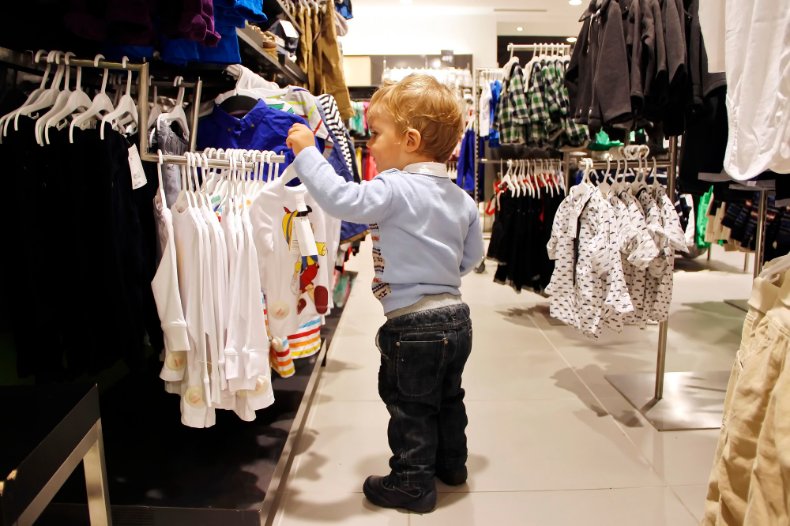
Seasonal Shopping Calendar
Timing purchases strategically can save significant money while ensuring children have appropriate clothing when needed. Plan ahead with our comprehensive seasonal wardrobe planning tool to track what you need and when to buy it.
Best Times to Buy Toddler Clothes
Winter Clearance
Buy next year’s winter items at 50-70% off
Spring Prep
Stock up on summer clothes before peak season
Back-to-School
Best sales on everyday basics and shoes
Holiday Sales
Black Friday deals on premium brands
Online Shopping Tips
Shopping for toddler clothing online requires strategy to ensure proper fit and quality. Understanding sizing guides and return policies prevents costly mistakes.
Always check specific brand sizing charts before purchasing, as toddler sizes vary significantly between manufacturers. A 2T at Old Navy might fit differently than a 2T from Zara or Carter’s. Our brand size comparison tool helps you navigate these differences and find the right fit every time.
🛒 Online Shopping Checklist
- Measure your child’s current height, chest, and waist
- Read customer reviews for sizing insights
- Check return policies and keep receipts
- Look for free return shipping options
- Consider buying two sizes if uncertain
- Save favorite items to monitor for sales
Why are children’s clothes so expensive?
Several factors contribute to children’s clothing costs including safety testing requirements, specialized sizing, frequent design changes, and lower production volumes compared to adult clothing. Quality materials and ethical manufacturing also increase prices but provide better value long-term.
Budget-Friendly Shopping Strategies
Smart parents can build quality wardrobes without overspending through strategic shopping approaches:
- Mix high and low: Invest in outerwear and shoes, save on basics
- Shop end-of-season sales: Buy next year’s clothes at clearance prices
- Consider consignment: Quality secondhand options offer significant savings
- Focus on versatility: Choose pieces that mix and match easily
- Sign up for newsletters: Get early access to sales and exclusive discounts
Care & Maintenance

Proper care extends the life of toddler clothing and maintains safety standards. Understanding fabric care helps parents get maximum value from their purchases.
Washing Best Practices
Always sort toddler clothes by color and fabric type before washing. Use mild, fragrance-free detergents specifically designed for sensitive skin to avoid irritation. Transitioning to regular detergent should be done gradually.
Washing Guidelines by Fabric Type
Cotton: Cold water, gentle cycle, low heat drying
Organic cotton: Cold water only, air dry when possible
Synthetic blends: Warm water, medium heat, remove promptly
Delicate items: Hand wash or gentle cycle, air dry flat
Stain Removal Strategies
Acting quickly is crucial for successful stain removal. Keep a stain treatment stick in your diaper bag for immediate action when accidents happen away from home.
Common Stain Solutions
Food Stains
Rinse with cold water, apply dish soap, wash normally
Mud & Dirt
Let dry completely, brush off excess, then wash
Paint & Markers
Scrape excess, rinse with cold water, use stain remover
Fruit Juice
Soak in cold water with white vinegar before washing
Storage and Organization
Organizing toddler clothes by size and type makes dressing time smoother and helps track what’s needed for upcoming seasons.
Use clear bins with labels for storing seasonal items or clothes waiting to be grown into. This system helps prevent duplicate purchases and makes hand-me-downs easier to manage.
Safety & Health Considerations
Are children’s clothes flame retardant?
US law requires children’s sleepwear to be flame-resistant, but there are exceptions for tight-fitting cotton pajamas. Understanding flame retardant requirements helps parents make informed decisions about sleepwear safety.
Chemical Safety in Children’s Clothing
Parents increasingly concerned about chemical exposure seek clothing free from harmful substances. Look for certifications like GOTS (Global Organic Textile Standard) or OEKO-TEX Standard 100 that verify textile safety.
🧪 Chemical-Free Clothing Certifications
- GOTS: Guarantees organic fiber content and environmental criteria
- OEKO-TEX Standard 100: Tests for harmful substances
- CPSIA Compliant: Meets US Consumer Product Safety standards
- Cradle to Cradle: Assesses entire product lifecycle
Adaptive Clothing for Special Needs
Children with physical differences or sensory sensitivities benefit from adaptive clothing features. These thoughtful designs include magnetic closures, seated-friendly cuts, and sensory-friendly fabrics.
Brands like Tommy Hilfiger Adaptive and Target’s Cat & Jack adaptive line offer mainstream options that prioritize both function and style for children with disabilities.
Age-Appropriate Safety Features
Different age groups require specific safety considerations in clothing design and selection.
- 12-18 months: No small buttons, snaps should be secure, avoid ties
- 18-24 months: Easy-off designs for potty training, non-slip shoe soles
- 2-3 years: Self-dressing friendly features, visible in low light
- 3-5 years: Playground-appropriate durability, weather protection
Brand Spotlight: What Parents Need to Know
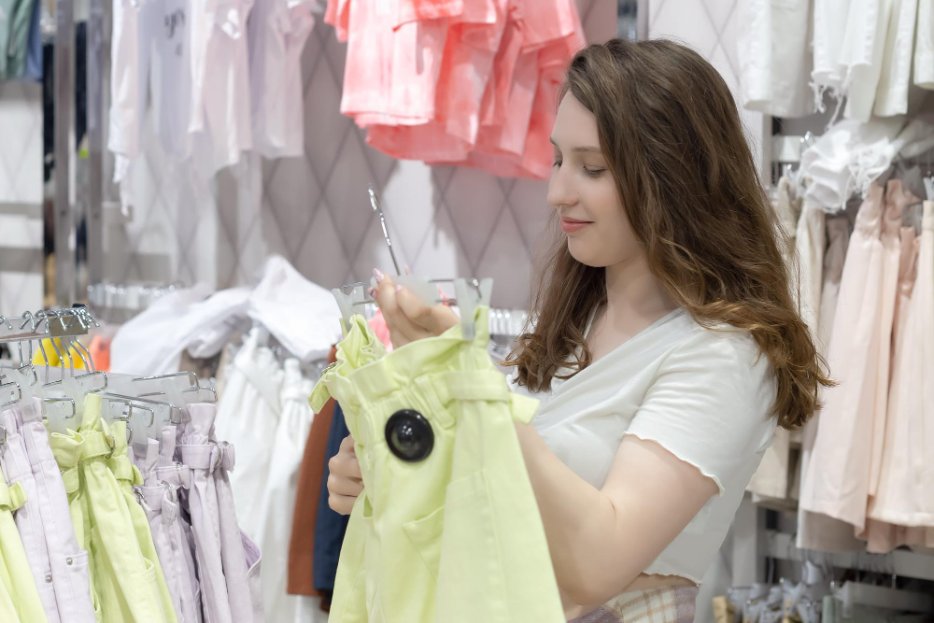
Are Shein kids clothes good quality?
Shein’s children’s clothing offers trendy styles at extremely low prices, but quality and safety standards are inconsistent. Parents report sizing issues, poor durability, and concerns about fabric safety. For children’s clothing, investing in established brands with safety certifications provides better value and peace of mind.
Is Carter’s a good baby brand?
Carter’s consistently ranks among the top choices for baby and toddler clothing due to their reliable sizing, affordable prices, and safety standards. The brand has been serving families for over 150 years and maintains strong quality control across their product lines.
Do Zara do kids clothes?
Yes, Zara Kids offers trendy children’s clothing that mirrors adult fashion trends. Their pieces tend to run small and may not be as durable as traditional children’s brands, but they excel at providing fashionable options for style-conscious families.
Is H&M good quality?
H&M Kids provides acceptable quality for the price point, with improving sustainability initiatives. While not as durable as premium brands, their Conscious Collection uses more sustainable materials and offers good value for rapidly growing children.
What is Genuine Kids?
Genuine Kids is a private label brand sold exclusively at OshKosh B’gosh stores and online. The brand offers casual, comfortable clothing at moderate prices, focusing on classic American children’s wear aesthetics.
What is the most expensive clothing brand for kids?
Luxury children’s brands like Gucci Kids, Dolce & Gabbana Kids, and Burberry Kids command premium prices, often exceeding $200-500 per piece. These brands offer couture-level craftsmanship but represent extreme luxury rather than practical everyday wear.
What is the billionaire kids brand?
This likely refers to brands favored by wealthy families, such as Bonpoint (French luxury), Moncler Kids (premium outerwear), or custom pieces from high-end designers. These brands emphasize exclusivity, premium materials, and sophisticated designs.
Frequently Asked Questions
Essential baby clothes include onesies, sleepers, pants, socks, and weather-appropriate outerwear. Focus on soft, breathable fabrics like cotton and prioritize easy-change designs with snaps or zippers. New parent essentials help create a practical starter wardrobe.
Children often gravitate toward brands with fun graphics, bright colors, and character themes. Brands like Disney, Pokemon, and superhero-themed clothing from various manufacturers typically appeal to kids, though preferences vary by age and individual interests.
Toddlers need comfortable, easy-to-move-in clothing made from breathable fabrics. Appropriate toddler clothing includes elastic-waist pants, pullover tops, and shoes that support developing feet. Avoid complicated closures and prioritize comfort over style.
The “best” brand depends on your priorities: Carter’s for budget-friendly basics, Pehr for organic quality, Janie & Jack for special occasions, and Primary for gender-neutral options. Consider your budget, values, and child’s specific needs when choosing.
Target’s main kids’ clothing brand is Cat & Jack, which offers trendy, affordable options for children. They also carry other brands and have introduced adaptive clothing lines to serve children with disabilities.
Major apparel groups own multiple children’s brands. For example, VF Corporation owns brands like The North Face Kids and Timberland Kids, while Gap Inc. includes Gap Kids, Old Navy Kids, and Banana Republic Kids in their portfolio.
Conclusion
Choosing the best toddler clothing brands for 2025 requires balancing multiple factors: comfort, safety, durability, style, and budget. The landscape has evolved significantly, with sustainability and inclusivity becoming key considerations alongside traditional concerns about fit and value.
Key Recommendations
For everyday basics: Carter’s and Cat & Jack (Target) provide excellent value with reliable quality and consistent sizing. These brands offer the durability needed for active toddlers while remaining budget-friendly for growing children.
For sustainable choices: Pehr, Colored Organics, and Burt’s Bees Baby lead in organic materials and ethical manufacturing. These brands justify higher prices through superior longevity and environmental responsibility.
For special occasions: Janie & Jack and Rylee + Cru offer unique designs and premium quality that create lasting memories. Their pieces often become family keepsakes passed down through generations.
For gender-neutral options: Primary and Organic Zoo provide versatile pieces that work for any child while maintaining high quality standards and thoughtful design.
Final Shopping Tips
Remember that the “best” brand varies by individual needs and priorities. Consider your child’s activity level, skin sensitivity, and personal preferences alongside your budget and values. Involving children in clothing choices can reduce daily battles and encourage independence. Take our brand recommendation quiz to find brands that perfectly match your family’s specific needs and preferences.
Focus on building a versatile wardrobe with quality basics supplemented by a few special pieces. This approach provides maximum value while ensuring your child always has appropriate, comfortable clothing for any situation.
Stay informed about recalls and safety updates, especially for sleepwear and items with small parts. The children’s clothing industry continues evolving with new safety standards and innovative materials that benefit growing families.
Most importantly, remember that the best clothes are ones your child feels comfortable and confident wearing. When children feel good in their clothes, it shows in their behavior and self-expression, making the investment in quality brands worthwhile for the entire family.
🎯 Action Steps for Parents
- Assess your child’s current wardrobe and identify gaps using our seasonal wardrobe checklist
- Set a realistic budget for clothing purchases
- Research brands that align with your values and needs with our brand finder quiz
- Take advantage of seasonal sales to build next year’s wardrobe
- Consider starting a clothing swap with other parents
- Keep safety certifications and care instructions accessible

